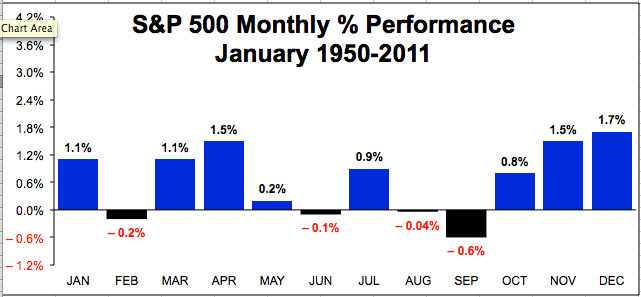3 Ways To Tell If Your Stock Has Bottomed
No one can call stock bottoms with absolute certainty, but there are some common trends that appear when stocks are about to hit bottom.1. Sector Characteristics
The stocks you own in your portfolios belong to sectors. Sectors are simply groups of public companies and stocks that are in a related industry. Oil and gas, technology, financial and retail are some sectors that may be familiar to investors. Typically, stocks follow in lock step to both the overall stock market and their respective sector. Identifying which sector(s) your stocks belong to is a good first step to help determine if your stock is near a bottom or a point of less intense declines.
Most of us are familiar with the credit market meltdown in 2008, which decimated financial stocks and even drove financial icons out of business. Most financial stocks traded downward together for an extended period of time. Investors who looked to find "value" in certain financial stocks were crushed, as the entire financial sector experienced a historical decline. The lesson is to identify and understand what sector your stock belongs to and compare its performance against the entire market.
2. Price and Volume
Once you identify your stock's sector, some other clues can give you some confidence that your stock is nearing a point bottom. Many technicians think that stock price and stock volume are the two most important indications of where a stock is going. Stocks tend to bottom when there are few sellers of that particular stock. It sounds ridiculously simple, but if you think about it: if few sellers exist, more buyers remain and buyers are more willing to pay a higher price for the stock; this means a price bottom has formed.
Volume adds credibility to stock prices and price direction to an extent. Remember, stocks trade on supply and demand just like all other goods in a free market. There is just a lot more things that influence stock prices than say a gallon of milk. The higher the relative volume once the stock has finished going down, the more likely that the stock will not see lower prices anytime soon. So, if stock XYZ's average daily trading volume was 5 million shares a day as it declined 50%, but during the last three trading days it has averaged over 15 million shares daily AND the price of the stock has appreciated during, it is likely that the stock has reached an inflection point and is finished going down significantly. Remember, fewer sellers exist at lower prices as most people were looking to "sell high." If only buyers remain, stock prices will rise.
3. Keep Your Ear to the Street
Perhaps an overlooked tell of when a stock is bottoming is its perception on The Street. Unfortunately, many average investors hear sound bytes on the business news and take it as gospel. Ironically, there is an entire school of investment with the main strategy being to go against the conventional wisdom. These investors are aptly called contrarians. Contrarians tend to bet against what the "smart" money is doing. Many times going against the grain can be highly profitable and can also be helpful in determining if your stock has bottomed.
The oil and gas sector went through a significant bear market in sympathy with the great recession that began in 2007. Oil prices went down over 50% and stocks in the oil and gas groups were hemorrhaging. Business news hyped up the decline and pundits were talking about the demise of oil and the use of natural gas substitutes and solar energy. No one wanted to touch an oil stock with a 10-foot pole. Investors who went against the grain and snapped up blue chip oil stocks saw a handsome profit. It pays to see all sides of a stocks story.
Going against the grain is a strategy that many feel works well particularly at market tops and bottoms. As an investor, it is at least worth your time to listen to what everyone is saying and wonder: can they all really be right?
Conclusion
Ideally, investors want to know when price trends are about to make a major change in either direction, whether they're reaching tops or bottoms. The bottom line is that no one truly knows with certainty. Clues, such as a big volume spike on price changes and paying attention to your stock's sector, will give you some insight into whether your stock has reached a point where it will no longer decline significantly. Keep in mind that these are just pieces of a puzzle in the world of investments but if you can add this skill set to you investment intelligence, you will likely be more successful investor.
Make Double Digit Returns On Your Portfolio This Year
The Best Unknown Fundamental Ratio
3 Ways To Tell If Your Stock Has Bottomed
The Most Volatile Commodities of 2010
Silver Hits Rockstar Status
Forget Gold, These Investments Are Poised For A Strong 2011
Get $100 off a subscription to TheBull PREMIUM
Check out TheBull's new market data section
Breaking News - all the latest breaking news articles






 go the dragon
go the dragon




